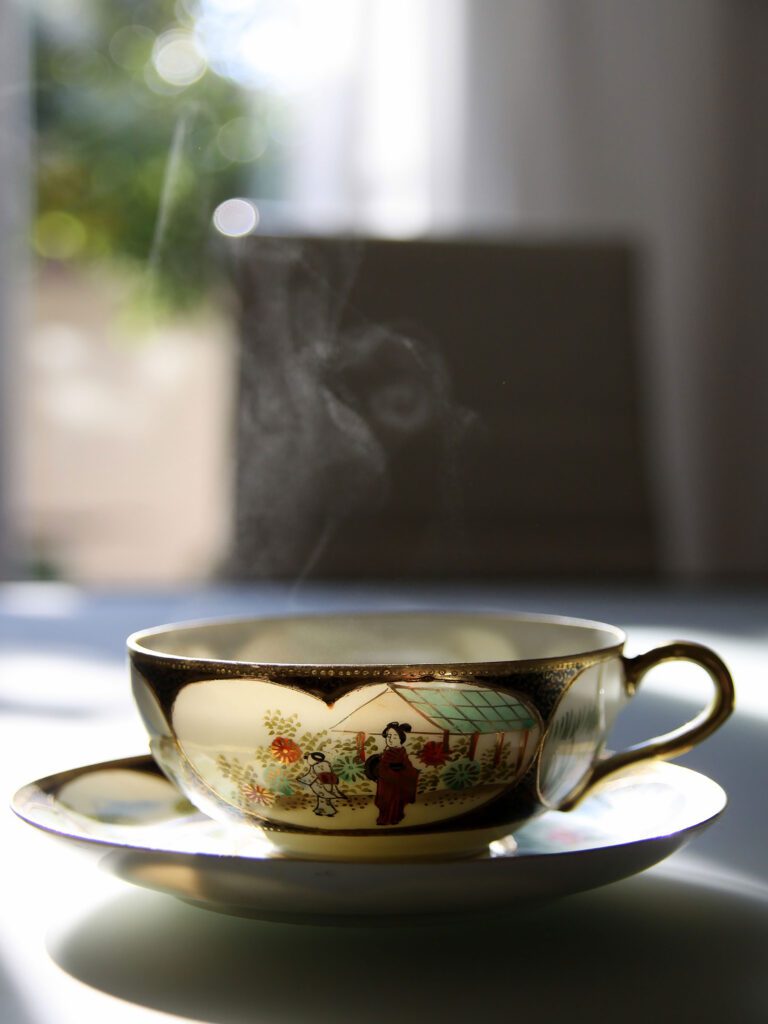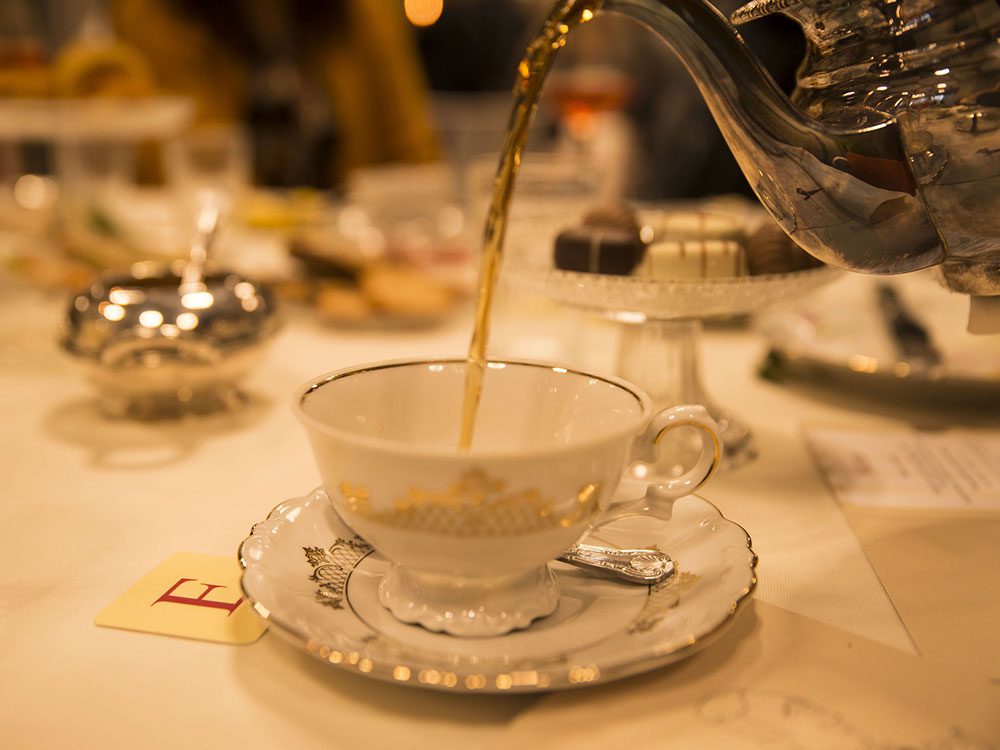Tea, a small word with such a long history.
It is a beloved drink which is popular worldwide.
Tea is a famous drink consumed daily by more than half of the population on earth, and it is by far the most popular drink produced by plant leaves.
By following us into this journey back to time and the history of tea, you will realize that this famous drink has a long and interesting history, full of mystery and mythical origin which starts hundreds of years ago, from its discovery to the present day.
In addition, you may be surprised by the things that you are going to read, about the social, financial and political role it played.
Indicatively, we have to mention that the exact time when tea was drunk for the time is unknown. However, let’s begin by telling you it history from its discovery to the present day.

A first myth…
To begin its story, we need to travel many centuries back to the past, back in 2373 BC.
According to a popular Chinese myth, the drink has been known in China since the reign of the mythical emperor Shen Nung, who is also considered the father of Chinese medicine.
So, one day, when the emperor was in the countryside, as he was boiling water, by accident a few tea leaves, drifting in the air, fell into it.
After testing it, the emperor was surprised by this new taste and found that the more he drank, the more energy he had.
Thus, he began to introduce his followers to its consumption but mainly to its cultivation.
The first historical reference
Historically, the first reference, considered valid, appears in the distant 350 BC. According to it, the cultivation of tea began in the Chinese province of Setswan and later expanded from southern China to the north with the help of the Buddhist monks.
Tea became their favorite drink as it could help them stay awake during their long meditations.
What follows is the spread of tea along with Buddhism in China and other places in Asia. However, tea in ancient China was quite different compared to the modern tea.


Tea in Asia: The original use and its role
According to the historical Chinese dictionary “Guan Yi”, approximately in 200 BC, tea was for the first time processed.
So, according to it, they pressed all the dried tea leaves, creating “bricks” which they later stored.
Then, for the preparation then, they had to break the “brick” into small pieces and mix it with hot water. They usually added salt, ginger and orange. You may wonder at this point why.
At that time tea was not an enjoyable beverage as we know it today, but a bitter-tasting medical decoction that was used to treat stomach pains, eye and skin diseases but also to treat drowsiness.
During emperor Tang’s dynasty, tea developed and changed. Advances in technology helped to improve its cultivation, while new processing methods have improved its taste to the point where the transition from a medical decoction to a delicious beverage has been made throughout the empire and its farmers.
Later members of the Tang Dynasty began to demand it as a tax paid to them by farmers. The latter often had to limit rice cultivation to give priority to tea.
At the end of the 6th century AD, tea was geographically extended to nearby Japan and Korea by Buddhist monks returning from their studies in China. Zen Buddhist monks would create an entire spiritual ceremony around tea that evolved into a Japanese tea ceremony that continues to this day.
At the same time, during the Ming dynasty, the use of tea bricks faded and was replaced by tea leaves dipped in boiling water. At that time tea began to be used in trade with the Europeans
Tea in Europe & its role
The Dutch brought the first shipment of tea to Amsterdam in 1610 and began spreading it to the rest of Europe. Initially Europeans did not accept tea directly because they saw it as a bitter medical decoction, however, they found it useful for its ability to relax the mind and remove unwanted dreams.
Travelling further north to Europe, tea arrived in Britain in the year 1645. Can you guess what happened when it came into contact with the British for the first time? Being coffee lovers, the English did not seem to prefer and approve its use. However, Princess Catherine of Portugal, who loved tea, married Prince Charles the second of England and when she arrived in England the first thing she asked for was a cup of hot tea.
That was an incident which helped the spread and approval of tea in the country since all the nobles of that time, wanted to drink tea as the royal family did. We have to admit that the first tea influencers were members of the royal family!

Tea conquers the world
We are in 1684 when tea, specifically its Japanese variety, is imported by Dr. Cleyer to the American continent.
Several years later, a remarkable story took place in 1827. A young tea taster of the Dutch variety, who was called Jacobson, risked his own life in a daring venture: He wanted to enter China’s forbidden tea gardens in order to spread the tea to the distant East Dutch Indies and Java. After six attempts, he successfully managed to return with tea seeds and twelve Chinese farmers and growers.
It is worth mentioning that the English Company of East Indies, which operated from about 1600 to 1858, created the largest tea monopoly and played an important role in the popularization of the drink. In an effort to perpetuate this monopoly, the British Parliament passed the Tea Decree of 1773, which was one of the causes of the American Revolution.


Reaching the present day
To sum up, the use of tea as a drink had been established in the Netherlands since the mid-16th century and the custom of afternoon tea spread to New Amsterdam, which is present-day New York, on the other side of the Atlantic. In the United Kingdom the custom of afternoon tea, accompanied by cakes, started around 1840 by the Duchess of Bedford while iced tea first appeared at the World’s Fair in Saint Louis in 1904 by the Englishman Richard Blechynden who owned tea plantations.
In modern history, approaching the late 19th and early 20th centuries, the cultivation of tea spread to various countries around the world.
Today, tea is the second most popular beverage in the world, with global consumption projected to reach 300 billion litres by 2021.
Undoubtedly, the discovery, evolution and spread of tea is of great interest. From a medical decoction with active properties but also a form of tax, to the special ceremony and its connection to social status, this beverage has deservedly earned the place it deserves in history.
